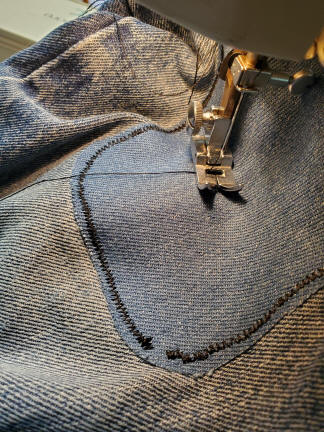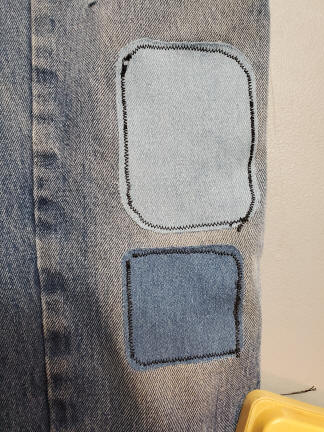

| I know, until I met you I
didn't think it was possible either. From Here to Eternity |
D Vautier
4/23
Iím a notorious camel knee guy. I just like to work on my knees a lot. But over the years have needed to discard so many perfectly good jeans simply because the knees wore out.
NO MAS!
After working several weeks on canvas for my sonís boat, I decided to become a regular sew-and-sew. I picked up an old Kenmore machine that does all the basic stuff really well. The older machines are actually made of metal. Imagine that. To do leg work you have to have a small neck machine to get to the legs and arms. This machine had a removable table.
So I got some denim needles and a good assortment of strong thread and practiced up a bit. Hereís what I learned about doing patches.
You can come in from the top or bottom of the leg or arm, whichever is closer.
Iron on patches are the only way to go. Using pins is just too hard. The material moves.
Watch out for undersewing. Thatís when you accidentally sew another part of the material.
You need to make two patch runsótop and left then right and bottom.
Lock stitch before and after (of course).
I like using a 1/8 zig with a #2 tension on top and about #3 on bobbin.
I used a 12 per inch stitch.
I also like the heavy thread on a # 14 needle.
Of course these are merely suggestions. I'm just a sew-and-sew. I think next time I will try to overcast although I don't mind the patch fraying. If I do overcasting I will need a bigger zigzag, shorter stitch, finer thread and probably a #11 needle--and more accuracy which I don't have. My worry with a tighter stitch is that the bobbin gets doubled up. And god, it's hard to thread a #11.



